A smoke-free policy should be added as a new clause in your tenancy agreement for all new and renewing tenants, and should also be presented as an addendum for existing tenants to sign. Consider asking your tenants to initial the smoke-free clause when they sign the agreement. If you have to enforce your policy, this measure will make it hard for them to claim they were not aware of the policy.
Aim to get the policy signed by as many tenants in the building as possible. If you are planning to enforce the policy as a matter of covenant, even with those tenants who have not signed a new tenancy agreement, notify those who have not signed the policy that they are still bound by it, and that you will be actively enforcing it.
If your policy will be implemented in phases, clearly communicate the timelines and ultimate scope of the policy to current and prospective tenants. If your policy includes an exemption clause, inform prospective residents that:
- there are tenants who have been exempted from the policy and are permitted to smoke in the building, and you can’t guarantee a completely smoke-free environment until the transition is complete. Be sure to explain why an exemption of certain tenants was chosen.
- while smoking is permitted in exempted units, complaints of second-hand smoke will still be addressed if it is found that a significant amount of smoke is infiltrating their homes. If there are significant complaints, you will likely have to implement mitigation efforts.
Download a sample letter to notify tenants about the new policy.
Spread the word about your smoke-free policy anywhere you currently list information about your properties.
Update:
- your application form
- your website
- your portfolio in third-party directories
- other marketing and advertising materials
Remember to register your smoke-free property in our online directory!






